9 Nights / 10 Days
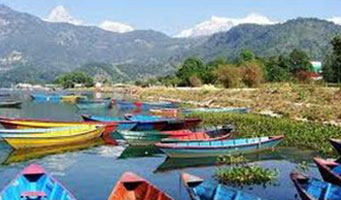
This package includes te destinations Kathmandu, Bhaktapur, Nagarkot, Bandipur and Pokhara.Services not mentioned in the itinerary.
All intrance fees at sightseeing places.
Airport tax,tips and gratitudes.
Personal expenses,lunch,dinner,beerages.
Portage at the airport.
Travel incurance.
Emergency evacuation charges.
Extra expences due to unavoidable circumstance beyond our control.27-0631-12
Arrival at Kathmandu International Airport.Meet assist and transfer to the hotel by our office representative in an exclusive vehicle.Take rest for the remaining day and overnight stay at the hotel in Kathmandu.
After breakfast around 7:30 we start our full day sightseeing of Kathmandu valley which are briefly stated belows.
Pashupatinath:
The magnificent temple of Lord Pashupatinath about 5 kms north-east of Kathmandu, is situated amidst many other temples on the right bank of the river Bagmati. Pashupathinath is the guardian spirit and the holiest of all Shiva shrines in Nepal.Lord Shiva is known by many different names; and Pashupati is one. Pashu means leaving beings, and Pati means master. In other words Pashupati is the master of all living beings of the universe. This is how lord Pashupati is eulogized in the Vedas, Upnisada and ohter religious books.The oldest ever chronicle in Nepal, Pashupati area is regarded as one of the most important places of pilgrimages for the followeres of Hinduism.
Boudhanath Stupa:
Boudhanath Stupa (or Bodnath Stupa) is the largest stupa in Nepal and the holiest Tibetan Buddhist temple outside Tibet. It is the center of Tibetan culture in Kathmandu and rich in Buddhist symbolism. The stupa is located in the town of Boudha, on the eastern outskirts of Kathmandu. Bodnath was probably built in the 14th century after the Mughal invasions; The five Buddhas also personify the five elements (earth, water, fire, air and ether), which are represented in the stupa's architecture. The base of the stupa consists of three large platforms, decreasing in size. These platforms symbolize Earth, and here you can look out at the mountains while listening to the chants of the devout doing kora, walking around the stupa praying.
Syambhunath Stupa:
After lunch we head atop a hill on the western edge of the Kathmandu Valley, the ancient Swayambunath Stupa (known to tourists as the Monkey Temple) is Kathmandu's most important Buddhist shrine. The sleepy, all-seeing Buddha eyes that stare out from the top have become the quintessential symbol of Nepal. hen this temple was founded about 2,000 years ago, Kathmandu Valley was filled with a great lake. According to Buddhist legend, a single perfect lotus grew in the center of the lake. When the bodhisattva Manjusri drained the lake with a slash of his sword, the lotus flower settled on top of the hill and magically transformed into the stupa. Thus it is known as the Self-Created (swayambhu) Stupa. The earliest written record of the Swayambunath Stupa's existence is a 5th-century stone inscription, but scholars believe there was probably a shrine here as early as the 1st century. Even before that, it is likely that animist rites took place on this hill. Swayambunath is one of Nepal's oldest Buddhist temples and it has an ancient atmosphere, especially when one approaches on foot with the pilgrims. The primary approach to the temple is from the eastern side, where 365 ancient steps lead up the steep forested hillside. The base is about a 20-minute walk from the center of Kathmandu. This staircase is the only route pilgrims would consider and is the most memorable way for any visitor to experience the stupa. However, an alternative is to drive or take a taxi to the west side, where there are only a few steps to climb to the top.
Budhanilakantha Temple:
Budhanilkantha Temple is located at the base of Shivapuri Hill within the Kathmandu valley on the northern side. It is also known as mystical Budhanilkantha temple or Narayanthan temple .Budhanilkantha literally means Old Blue Throat. It is only nine kilometer away from the main city. It is a deity of Lord Vishnu; Lord Vishnu is also known as Narayan.It is called Vishnu (Narayan) Jalasayan lying on Ananta Sesa, in the cosmic ocean. The deity is about thousand years old. Lord Vishnu is about five meter (Seventeen fits) long and lying in a thirteen meter (forty three fits) long tank, as if floating with his legs crossed with his sleeping body resting on the coils of Ananta and his 11 hooded head.His four hands hold the four symbols of Vishnu, the Shankha as conch shell, Chakra as disc,Gadha as club and Padma as lotus flower. It is believe that the deity was carved in the seventh or eighth century during the Licchavi period. Hindus can walk down the steps and touch his feet. It is with the sacredness of this particular god that a deep seated belief was created by King Pratap Malla through a prophetic dream. It was his strong belief and fear that should the King of Nepal visit the Budhanilkantha temple, death would be threatening immediately to fall upon his departure. The two other images of the deity which were carved during the same time lie at two particular destinationa, the Balaju Garden were public viewing can take place and the beautiful Royal Palace in Kathmandu.It is here at Budhanilkantha temple, however that public is not permitted.
Overnight stay at a hotel in Kathmandu.
After breakfast around 7:30 we start our full day sightseeing of Bhaktapur which is briefly stated belows.
Bhaktapur:
Were there nothing else in Nepal save the Bhaktapur Durbar Square, it would still be aptly worth making a journey half way round the globe to see. E.A. Powell, The Last Home of Mystery, 1929, London
Bhaktapur, between the 14th and the 16th centuries, was the capital of Nepal. Though today it has lost the privilege to Kathmandu, it still retains its culture and traditions, some say, even better than Kathmandu or Patan. One reason is that it is 15kms away from the madding crowd, the choking traffic and the general mayhem of the capital city. During the ancient days, the city was an important business centre as it was located in the bustling trade route to Tibet. The inhabitants were prosperous and self reliant. They were blessed with a fertile soil and the farmers could make enough produce to feed the entire town. The craftsmen were a respected lot and they were entrusted with the task of making the temples really fit for the gods. And by the looks of it, they did extraordinary justice to their responsibilities.
A living heritage’Bhaktapur’ meaning ‘city of devotees’ proudly bears the title of the ‘cultural capital of Nepal’ and lives up to it. Listed as a World Heritage by UNESCO for its exquisite temples, exotic wood carvings and other rococo works in stone and metal, Bhaktapur is in a class of its own. Compared to the other durbar squares, the Bhaktapur Durbar Square is quite spacious. Ironically, this is because of an earthquake that happened in 1934 which destroyed many of the temples and monuments that stood here once. This is a living heritage in every sense. There is even a school inside the premise, the entrance to which is the famous lion gate. Right next to the lions that stand as a possible deterrent for students bunking classes, is the statue of Ugrachandi, one of the masterpieces in stone. Ugrachandi is the fearful manifestation of the consort of Lord Shiva. Bhairab, the fierce avatar of Lord Shiva, associated with annihilation, is revered all over Nepal by both Hindus as well as Buddhists. Bhairab is invoked to destroy and annihilate enemies. The images of Bhairab which you find in the durbar square hence are quite ferocious and intimidating.
The Dattatreya Square named after the triad deities, Brahma the creator, Vishnu the preserver and Maheshwara the emancipator are a delight for those interested in wood carvings. The Square also features some of the finest examples of metal craftsmanship you would ever see. The 55 Windows Palace, built in the 18th century, is made of brick and has an upper floor entirely of wooden windows. Hence, the name. The earthquake of 1934 partially destroyed the palace. Fortunately some of the more exotic carvings were mercifully spared from the fury. The Taleju Bhawani was the preferred deity for the kings here as well. Getting inside the Taleju temple complex is not usually encouraged but you can persuade the armed guards to look the other way. Once inside the complex, you get a foretaste of some imperial preferences. The Mallas, it seems, were as fond of luxuries as they were of their gods. Their swimming pool had an open terrace for sunbathing. The golden spout was for filling the pool with water and the entire pool was outlined like a sprawled snake. Even inside the pool, the kings had set up miniature temples - well, it definitely looked like they had long-lasting bathing sessions.
At the southeastern corner of the royal palace is the Siddhi Lakshmi Temple. This is known as the ‘Lohan Dega’ or the stone temple. The steps leading up to the temple is flanked by the male and female species of animals and two nobles at the bottom, each of them are shown dragging a naked child and a dog. Just five minutes from the Durbar Square is the Taumadhi Square where the legendary Nyatapola temple stands towering elegantly. ‘Nyata’ is Nepali means ‘five stepped’. The Nyatapola, rising to a regal 30 metres, is Nepal’s tallest temple. Balanced on five receding square plinths, there are five balconies over which are five roofs each supported by magnificently carved wooden columns. At the bottom of the steep stairway that leads up to the temple are two wrestlers from the Malla times who were famed for their skill and strength. Further upwards are lions and griffins and statues of goddesses Singhini and Baghini.
The temple was built by King Bhupatindra Malla for his favourite deity the Siddhi Lakshmi. There are 108 wooden beams that support the roof from below, each depicting the goddess in her different forms. However, one strange fact is that despite the size and the allure of the temple, no one has really seen the goddess. The temple offers great views of the durbar square as well as the surrounding areas. The brick red of the square offers a fabulous contrast against the verdant green of the mountain of the valley. Set at right angles to the Nyatapola is the Bhairavnath Mandir. The three-tiered roof which stands against a clear afternoon sun shows off a massive grandeur. The temple, dedicated to the city’s patron god Bhairav is believed to have extraordinary powers which make it a favourite among the locals.
Drive to Nagarkot and overnight stay at a hotel.
After breakfast around 7:30 we start our sightseeing of Nagarkot.
Nagarkot:
Nagarkot is a village located about 25 miles east of Kathmandu, Nepal. It is located on the northeastern rim of the Kathmandu Valley at an elevation close to 6,800 feet above sea level. It is one of the most scenic spots in the region, renowned for its sunrise and sunset views of the Himalayas. You can pick Mount Everest out with its snow-topped peaks on a clear day as there is an observation tower at the very top of the village’s hills.
Nagarkot, historically, used to serve as the summer retreat for the royal family and many other aristocrats from Kathmandu. While the town offers great views of the mountains, there are few monasteries or temples.
However, Nagarkot makes for a good short hike, one in which you walk on the ridge of the valley. It has also become a popular stop for mountain bikers. You can catch a bus for the one-hour ride to Nagarkot from Bhaktapur, Nepal. A taxi will cost about a hundred times more. Most visitors, however, drive up, spend the night at one of the moderately-priced lodges and walk down by any number of routes. From Nargarkot, it takes just less than three hours to walk down a well-worn trail through several villages to Bhaktapur.
Alternatively, in three hours time, you can hike down to Changu Narayan, one of the most magnificent temples in the valley and designated a World Heritage site by UNESCO. The present structure was built in the early 1700's, but at the entrance of the main shrine are stone tablets with the inscriptions dating to 400 AD. Facing the entrance is a 5th century statue of a human-faced Garuda, the mount of Vishnu, who is also called Narayan. There are many other fine statues from the Licchavi era, as well as several from the more recent Malla pe riod, including that of King Bupatindra and his queen in a gilded enclosure from the 17th century. Changu Narayan is also patron ised by the Valley's Buddhists who wor ship Lokeswar (another name for Vishnu).
Nagarkot is the place where once Manjushree Bodhisatto stood and watched the lake in the Kathmandu Valley. Nagarkot is at the eastern periphery of the Kathmandu Valley. The hilltop called Nagarkot at more than 2,000 meters above the sea level is the second highest peak in the Kathmandu Valley. After an hour long exciting and winding drive you will be above to feel the cool breeze of air blowing endlessly into your face, and see the widest range of Himalayas including Mount Everest with our bare eyes from here. It is also one of the best spots to visit for unmatched sunrise and sunset views.And if awesome view is your first preference to visit Nagarkot,then, Peaceful cottage and cafe dumont ,nagarkot ought to be your first port of residence.
Drive back to Kathmandu and overnight stay at a hotel.
Drive to Bandipur; a unique geographical formation of Nepal.Overnight at the hotel.
Early morning,after breakfast our half day sightseeing starts at Bandipur:
Bandipur is located at 27.56 N, 84.25 E and an elevation of 1030m on a mountain saddle (Mahabharat range) approximately 700m above the Marsyangdi River Valley, 143 km to the west of Kathmandu and 80 km to the east of Pokhara. Since 1998 it is connected by an 8 km access road from Dumre (Kathmandu-Pokhara highway). Until then there was only an unreliable road, in monsoon usually not accessible or only by tractors. The mountain saddle, just 200m long, is barely wide enough to accommodate the main street lined by 2 - 3 storey buildings on either side. At the backsides of these houses the mountainsides steeply descend and the gardens are only accessible by stairs.
History:
Bandipur was established as a funnelling point of trade by Newar traders from Bhaktapur in the Kathmandu valley after it had been conquered in 1768 by Prithvi Narayan Shah. They took advantage of its malaria free location to develop it into an important stop along the India-Tibet trade route. With them they brought their cultural heritage and architecture which basically has remained unchanged to this day.
Originally a simple Magar village in the early 19th. Century Bandipur developed into prosperous trading centre and a community with town-like features: substantial buildings, with their neoclassical façades and shuttered windows and streets paved with slabs of silverish slate. Bandipur had its heyday in the Rana times (1846-1951), when, as a measure of its power and prestige, it was granted special permission to have its own library (still existing).
Early afternoon leave for pokhara.Check-in to the hotel and overnight at pokhara.
After breakfast we proceed towards sightseeing in Pokhara.Here is abrief driscription of todays sightseeing.
Sarangkot:
Sarangkot is the most popular tourist destination from where the tourist can enjoy the great view of the Pokhara Valley and the magnificent view of the mountains. Sarangkot is only 5 km from Lake Side, Pokhara. Sarangkot is the highest view point for a sunrise and it is just 1592m high. Sarangkot is 5 degrees cooler than Pokhara. Sarangkot can be reached easily by 45 minutes by a car ride to the top from Pokhara and then 45 minutes hike up to the main view point. Many tourists come to Sarangkot for sunrise view and go back after few hours but it will be good if tourist stay there for one night and enjoy the view and city light of Pokhara from Sarangkot. Paragliding can also be done from Sarangkot. From Sarangkot, on the northern direction we can see Dhaulagiri in the far west. Annapurna range is visible when the weather is clear on the same side. On the southern direction the village overlooks the city of Pokhara and its lake on the north-western outskirts of the city.
Davi’s Falls:
Davis Falls is a waterfall located at Pokhara in Kaski District, Nepal. An interesting aspect of the falls is that the water travels through a natural tunnel prior. The water from the fall flow about 500 feets through the natural tunnel at the depth of 100 feets from ground level. In the year 1961, a Swiss tourist who was just swimming in the Phewa Lake was swept away due to the unexpected overflow in the dam water and her husband was helpless. Thus, her body was never recovered and was vanished forever.Then the fall was named after her name as Davis Falls . In Nepali it is also called Patale Chango, which mean underground Waterfall. As, the name given the water flows under the ground through its natural tunnel of 500 feets from the fall made by the water currents beneath the land. The water passes through the cave called Gupteshwor Mahadevcave beneath the land. The source of water is provided through the dam of Phewa Lake and in the rainy seasons the rise in the water level increases the flow and density of water in this fall. The natural scenery is very impressive.
Gupteshwar Cave:
The Gupteshwar Cave is a sacred tourist destination. It is around two kilometers away from the Pokhara Airport. A symbolic Shivalinga is preserved in the cave. The cave has divided into two sections. One part of the cave is 40 meters in length with natural caves and the Shivalinga. The entrance is 2 meters high and 3 meters wide. The cave begins with few hall rooms which have many passages. Some of the passages are so small that one needs to crawl. To reach the shrine a thousand stairs have to be climbed. The Shivalinga inside the cave is said to be in the same condition since it was explored. This shrine is said to have certain healing powers. Hence many people visit it once in a year to be healed. The second part begins after this temple. It leads to the Davis Fall. Inside the cave photography is not allowed.
Fewa Lake:
Fewa Lake is a freshwater lake in Nepal located in the south of the Pokhara Valley that includesPokhara city; parts of Sarangkot and Kaskikot. The lake is stream-fed but a dam regulates the water reserve, therefore, the lake is classified as semi-natural freshwater lake. It is the second largest lake in Nepal, the largest in Gandaki Zone followed by Begnas Lake. Phewa lake is located at an altitude of 742 m (2,434 ft) it covers an area of about 5.23 km2 (2.0 sq mi) with an average depth of about 8.6 m (28 ft) with maximum water depth is 24 m (79 ft). Maximum water capacity of the lake is approximately 43,000,000 cubic metres (35,000 acre ft). The Annapurna range on the north is only about 28 km (linear distance) away from the lake, and the lake is famous for the reflection of mount Machhapuchhre and other mountain peaks of the Annapurna and Dhaulagiri ranges on its surface. The Taal Barahi Temple is situated on an island in the lake.
After breakfast we proceed towards todays sightseeing places.Here is a brief description about todays sightseeing places in pokhara
INTERNATIONAL MOUNTAIN MUSEUM:
While in Pokhara make it a point to visit the International Mountain Museum (IMM) that records, documents, exhibits and chronicles the past and the present development of mountains and mountaineering activities in the world. Built by Nepal Mountaineering Association (NMA), much support was received from various mountaineering clubs and associations as well as individual donors from around the world. The museum primarily provides information and exhibits everything related to Man, Mountain and Mountain activities from around the world.
IMM situated in Pokhara was opened on February 5, 2004. The Musuem is spread over a total floor area of 4,242 sq meter on 12.5 acres of land. The museum contains three main exhibitions halls - Hall of Great Himalayas, Hall of Fame and Hall of World Mountains. It also contains models of famous peaks, mannequins of famous mountaineers, culture and lifestyle of mountain people, flora and fauna including geoloy. The museum has been built with the theme of man, mountains and mountaineering. The museum also has model Nepali houses constructed in its premises.
Bindabasini Temple:
Standing proudly atop a hill, this striking temple looks calmly over the bustling city of Pokhara.
The white pagoda-styled building of the Hindu Bindabasini Temple quietly sits at some 3000 feet above sea level along the renowned Annapurna and Machhpuchhare mountain ranges. It is located near the busy Old Bazaar of Pokhara, a center of commerce in the Himalayas.
Bindabasini temple or Bindhyabasini Mandir is of great religious importance to Hindus living in the Pokhara region. It is a vital hub of religious fervor. The temple itself is dedicated to the Hindu goddess Durga, who is Pokhara's chosen guardian deity. Durga, also known as Shakti or Kali has numerous manifestations and at the Bindabasini temple she is seen as Bhagwati, a blood-thirsty aspect of the goddess. Durga appears in the form of a Saligram. A Saligram, according to Hindu mythology is an propitious stone. It is said that the temple was created after the goddess ordered king Khadag Bum Malla to set up a her statue here. The Bindabasini temple was then founded in BS 1845. Since its establishment, Bhagwati has been an object of worship here on a daily basis. Animal sacrifices are typically presented at the temple on Saturdays and Tuesdays. The Hindu festival of Dashain sees large numbers of believers coming to offer sacrifices at Binhyabasini Mandir. Indeed, there is little space for tourist during the festival of Dashain.
The ornate structure of Bindabasini Temple is surrounded by a park-like landscape. Many come here to enjoy pleasant picnics whilst enjoying the amazing panorama. Spectacular views can be absorbed from this marvelous vantage point which looks out over the town of Pokhara and takes in some of the impressive Himalayas. Adding to the peaceful atmosphere is the fresh scent of Dhup.
Old bazzar:
A stark contrast to Lakeside Pokhara, the old Pokhara Bazaar, 4 km away from Phewa Lake, is a traditional bazaar and a colorful gathering place for an ethnically diverse group of traders. The temples and monuments bear a close resemblance to the Newari architecture of the Kathmandu Valley. The old bazaar is also home to one of Pokhara’s most important shrines, the Bindhyabasini Mandir, a white dome-like structure atop a hill.
Overnight stay at a hotel in Pokhara.
Proeed towards airport and fly back to Kathmandu after breakfast.Take rest for the day.Overnight stay at the hotel.
End of our services with departure transfer to the airport to board flight for your onward destination.
| No of pax | Age Limit | Price per pax (Rs) |
|---|---|---|
| Adult | Above 12 years | $ 767 / Adult |
Three star combination
| 2-3 pax | $767.00 |
| 4-10 pax | $700.00 |
| 11-19 pax | $594.00 |
| 20+ | $553.00 |
Four star combination
| 2-3 pax | $825.00 |
| 4-10 pax | $759.00 |
| 11-19 pax | $653.00 |
| 20+ | $611.00 |
Five star combination
| 2-3 pax | $1103.00 |
| 4-10 pax | $1037.00 |
| 11-19 pax | $930.00 |
| 20+ | $889.00 |
A Travel Company Established as per Tourism Act of Government of Nepal. We Deals in Car & Coach Rental, Tour Operators, Hotel Booking Services. Read More...
65,962 PP

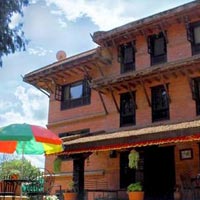 4D/3N
4D/3N
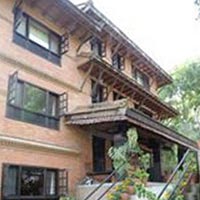 5D/4N
5D/4N
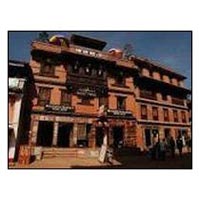 4D/3N
4D/3N
 5D/4N
5D/4N
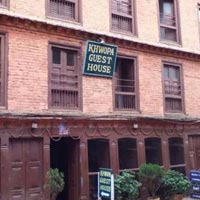 4D/3N
4D/3N
 5D/4N
5D/4N
 4D/3N
4D/3N
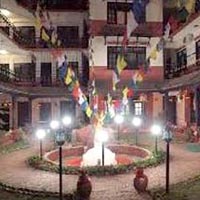 4D/3N
4D/3N
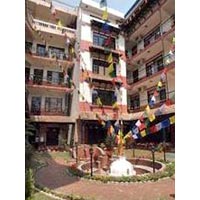 5D/4N
5D/4N
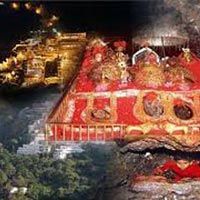 10D/9N
10D/9N
Srinagar - Anantnag - Patnitop - Jammu - Baramulla
 10D/9N
10D/9N
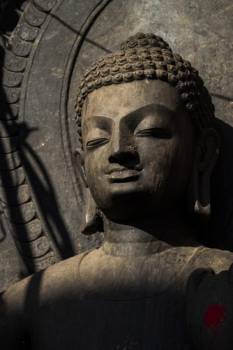 10D/9N
10D/9N
New Delhi - Varanasi - Bodhgaya - Rajgir - Nalanda - Patna - Vaishali - Kushinagar ..
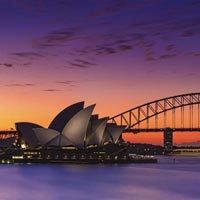 10D/9N
10D/9N
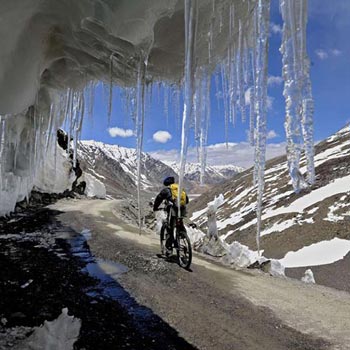 10D/9N
10D/9N
Kinnaur - Kaza - Spiti Romantic Package
Chandigarh City - Shimla - Kinnaur - Kaza - Digboi
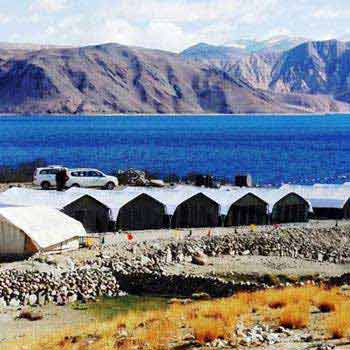 10D/9N
10D/9N
 10D/9N
10D/9N
South India - Kerala & Tamil nadu- 9 N/1..
Kovalam - Munnar - Alleppey - Madurai - Kochi - Kumarakom Thekkady
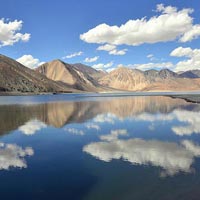 10D/9N
10D/9N
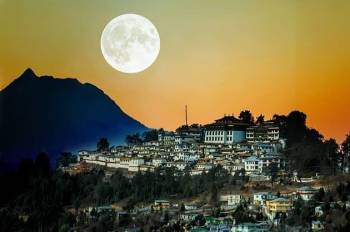 10D/9N
10D/9N
Tawang Kaziranga Shillong Tour
Guwahati - Shillong - Tawang - Kaziranga - Cherrapunji
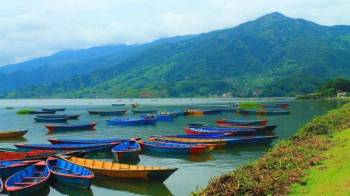 12D/11N
12D/11N
11 Nights - 12 Days Nepal Tour From Gora..
Prayagraj - Gorakhpur - Varanasi - Ayodhya - Kathmandu - Pokhara - Chitwan - janakpur
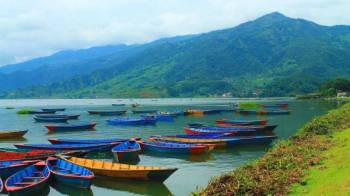 12D/11N
12D/11N
11 Nights - 12 Days Nepal Tour From Gora..
Prayagraj - Gorakhpur - Varanasi - Ayodhya - Kathmandu - Pokhara - Chitwan - janakpur
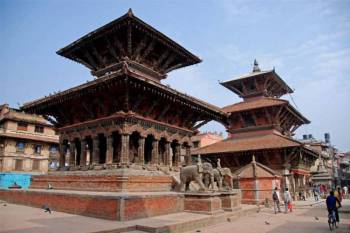 12D/11N
12D/11N
11 Nights - 12 Days Nepal Tour Package - 2
Prayagraj - Gorakhpur - Varanasi - Ayodhya - Kathmandu - Pokhara - Chitwan - janakpur
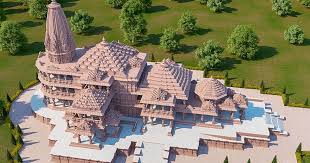 12D/11N
12D/11N
Prayagraj - Varanasi - Bodhgaya - Ayodhya - Pokhara - Chitwan - Parsa
 8D/7N
8D/7N
8D Kathmandu - Chitwan - Pokhara - Lumbi..
Kathmandu - Pokhara - Lumbini - Chitwan - janakpur
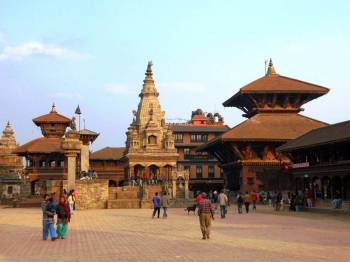 3D/2N
3D/2N
 6D/5N
6D/5N
 18D/17N
18D/17N
Best of North & West India with Nepal Tour
Mumbai - Kathmandu - New Delhi - Jaipur - Fatehpur Sikri - Agra - Jhansi - Varanasi..